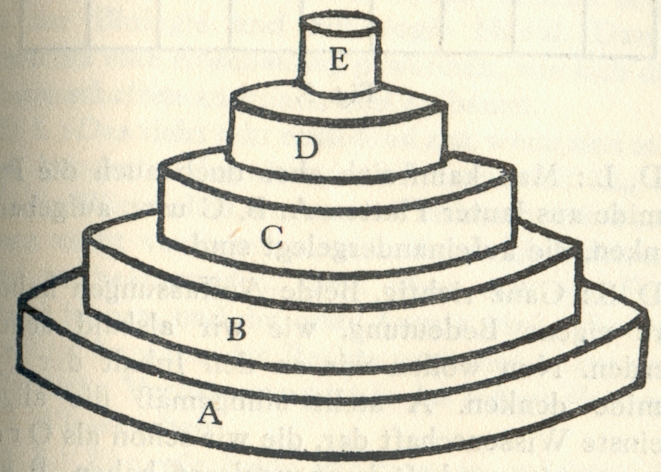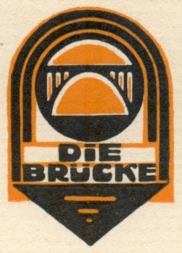The private library of Wilhelm Ostwald in Großbothen
Ostwald’s private library in Großbothen, Saxony – itself a symbol of harmony and order!
as a foundation of creativity, information organisation and art
Ostwald’s private library in Großbothen, Saxony – itself a symbol of harmony and order!
"In-formation" and education has a strong connection, e.g. through information literacy. In the end of a paper in the book “European Modernism and the Information Society” Michael Buckland mentioned the connection between documentation and the "technology/technique of intellectual work" what also has strong connections to education! Efforts and guides to research methods for students grew with the beginning of the 20th century.
All this supports the German philosopher Ernst Bloch’s quote: "It will be perceived with the aim of in-formatio about the world and of the world itself."
Ernst Bloch, Tübinger Einleitung in die Philosophie (Frankfurt a.M. 1977).
After describing how concepts or terms could be combined, Ostwald noted in a book about the philosophy of nature: “The laws of combinatorics even allow it to decompose an area of research formally and exhaustively in its branches and fields of research by initially locating empirically the elements of the domain and then by exhaustively combining them […] The application of combinatorics in scholarship is far from being widespread, as it should be.”

Taken from his chemical experience, Ostwald’s method of scholarÂly research can be descriÂbed as: Defining the problem (1), exploring the problem by going back to the basic concepts of it (2) and combining these basic concepts in a combinatorical way to explain the diversity of the complex world (3). The diverse objects created through combination had to be held together by a holistic framework (4) like Ostwald’s monistic world view and scientistic energetism.
Today more and more connections between “in-formation”, education as well as advertising, art and design are visible in domains like information literacy, information design and knowledge media design.
One ‘hidden’ connection to information science is shown here: Horst Rittel, later professor of design in Berkeley, was a successor of Max Bense at the Ulm School for Design founded by Max Bill. Ostwald was mentioned by Bill in the afterword of the German edition of Kandinsky’s "Point and line to plane". Max Bense wrote books about philosophy of nature and aesthetic information, Rittel together with Werner Kunz a book on the foundation of information science in Germany.
Ostwald’s activities in education showed his sense for individual development combined with systematic treatment. He believed that “the art of discovery“ should become “a part of the intellectual inventory of every one.“ Ostwald was aware that teaching research skills combined with enabling effective use of libraries was important. He suggested that teaching centers should be created at technical universities to improve techniques for the presentation of engineering knowledge and that these should be integrated into engineering education.
In the Twenties Ostwald got contact to members of the Bauhaus, e.g. to Walter Gropius. He gave talks at the Bauhaus in Dessau in 1927. The same year he was invited to join the Bauhaus board of trustees. Nevertheless most of the Bauhaus members remained offish to his ideas.
The search for harmony and order in combination with Ostwald’s energetic imperative (“Do not waste energy, but convert it into a more useful form”) was a foundation of his activities in the organization of scholarly communication, in the system of scholarly disciplines itself, in colors and forms. He proposed a “science of order” as the basis of his “pyramid of science”. The need for standardization especially expressed in his ideas about paper formats as well as the need for a synthetic auxiliary language to facilitate international communication of science was also an outcome of his philosophical concept of order.

In 1912 Ostwald joined the Werkbund which aimed at standardising industrial design. He published a paper on “standards” in the yearbook of the Werkbund in which he called art a “social product” which made it necessary to standardise it.
In 1911 Ostwald founded with Karl Wilhelm Bührer “Die Brücke [The Bridge]”, an “International Institute for the Orga-ni-zation of Intellectual Work” which tried to build a comprehensive, illustrated encyclopedia on sheets of standardized formats and to improve and organize scholarly information and communication. As a “World Brain”, as Ostwald called the Bridge, it should connect people and institutions working for scholarly purposes. He developed ideas to disassemble the contents of printed journals and disseminate single papers separately (monographic principle). To arrange the separate pieces these were held together through a universal classification (UDC). For Ostwald the standardization of paper sheets was a practical application of his energetic imperative. In all of his work he sought to create conditions for the unity of science and a seamless unity of scientific thinking with practical life.
